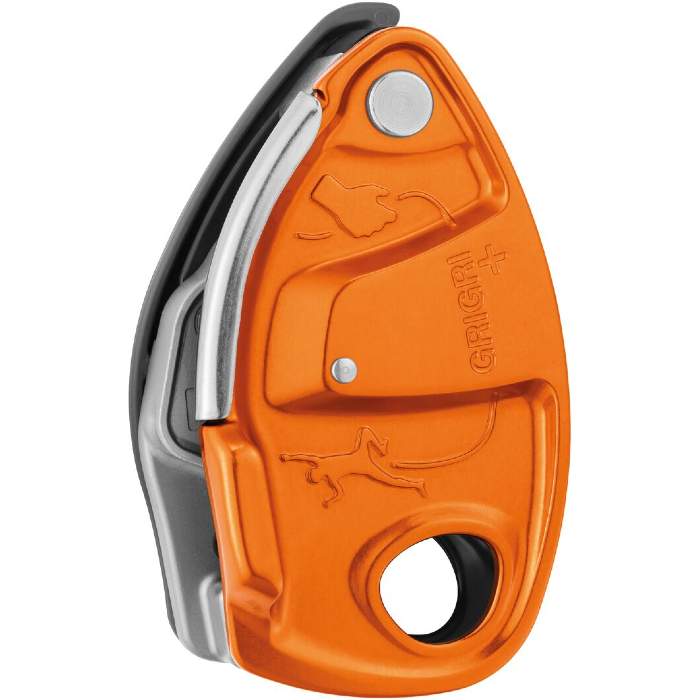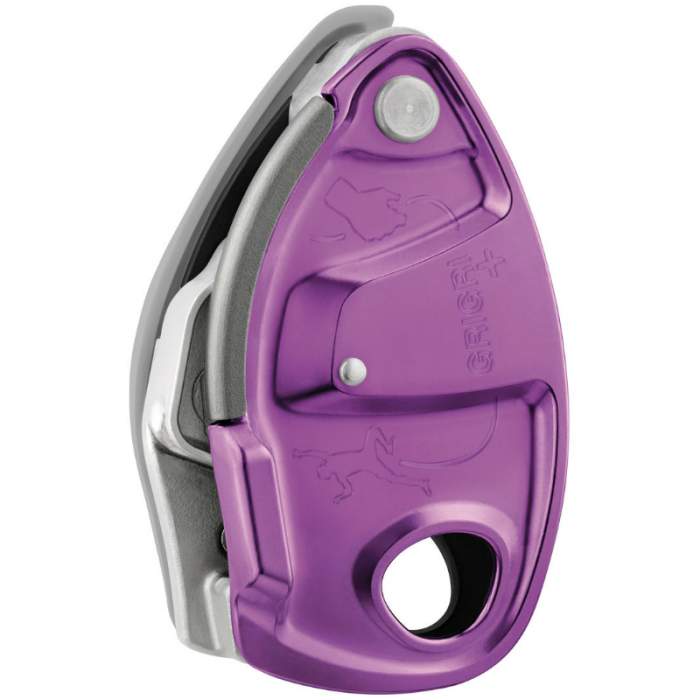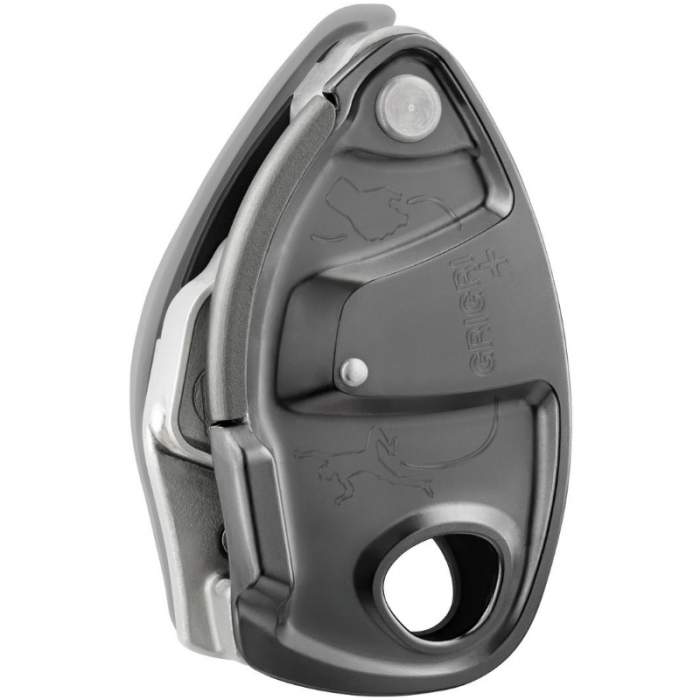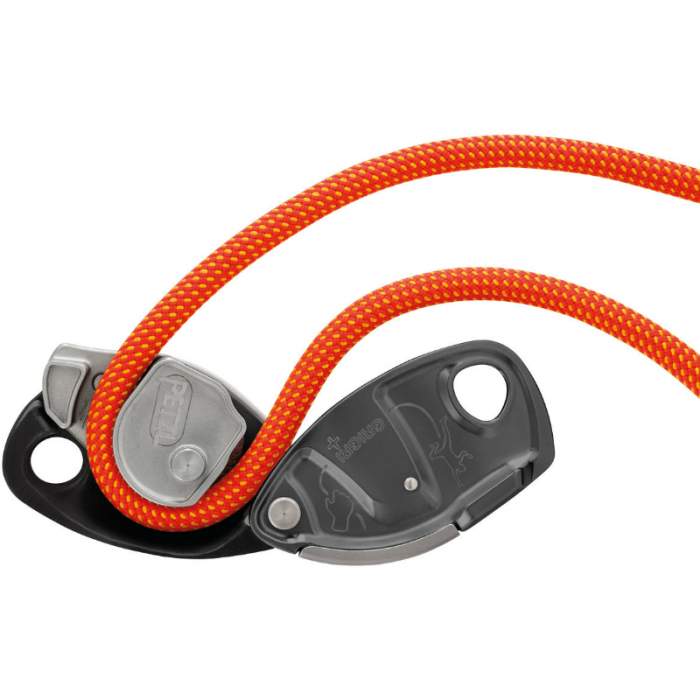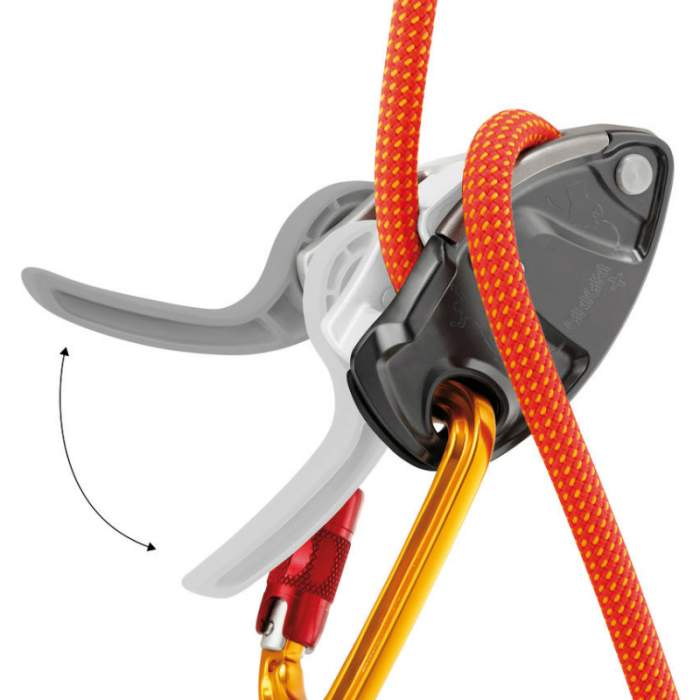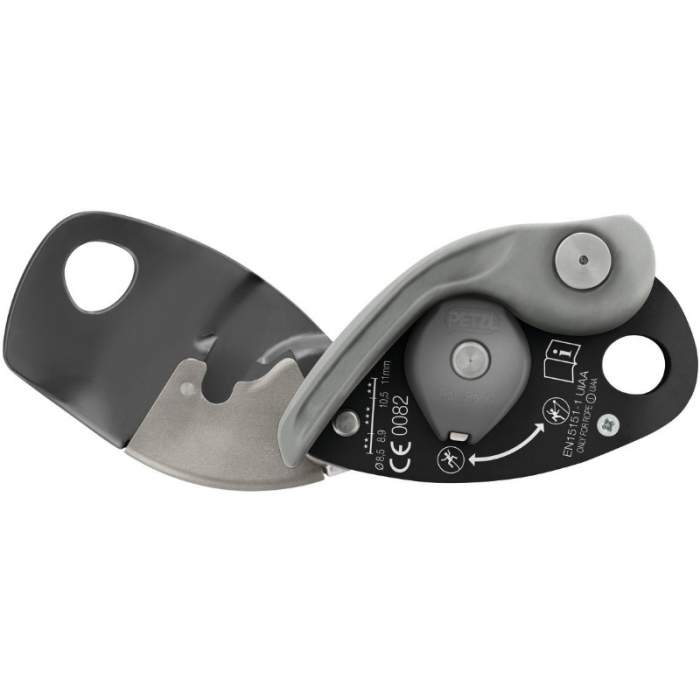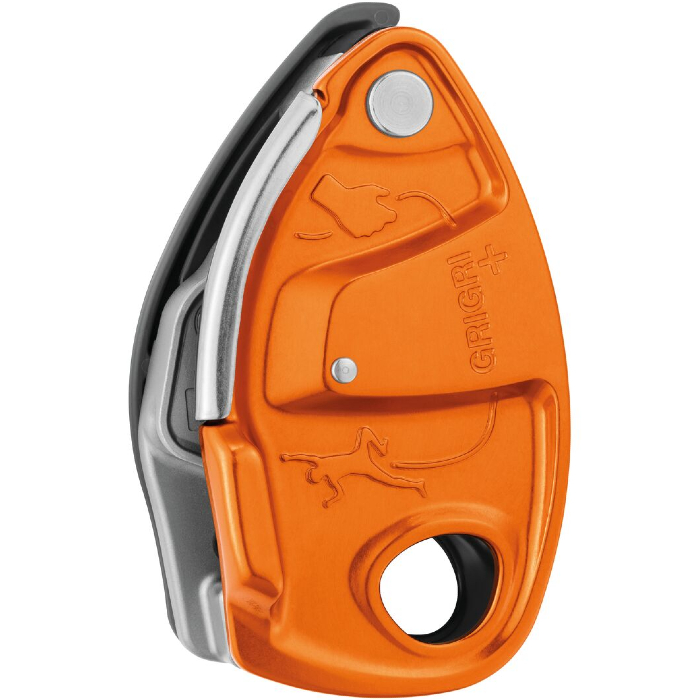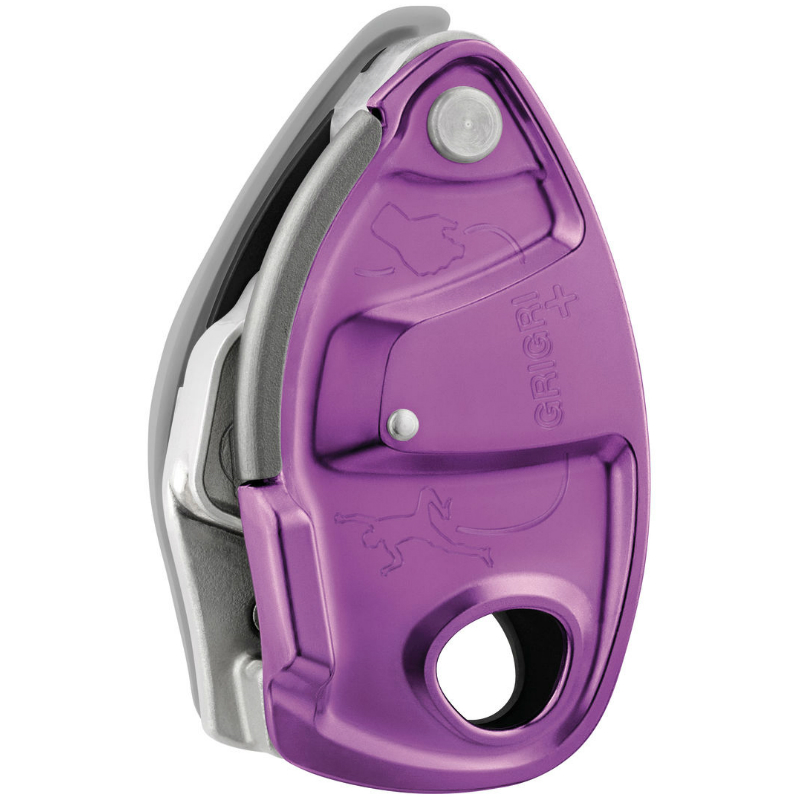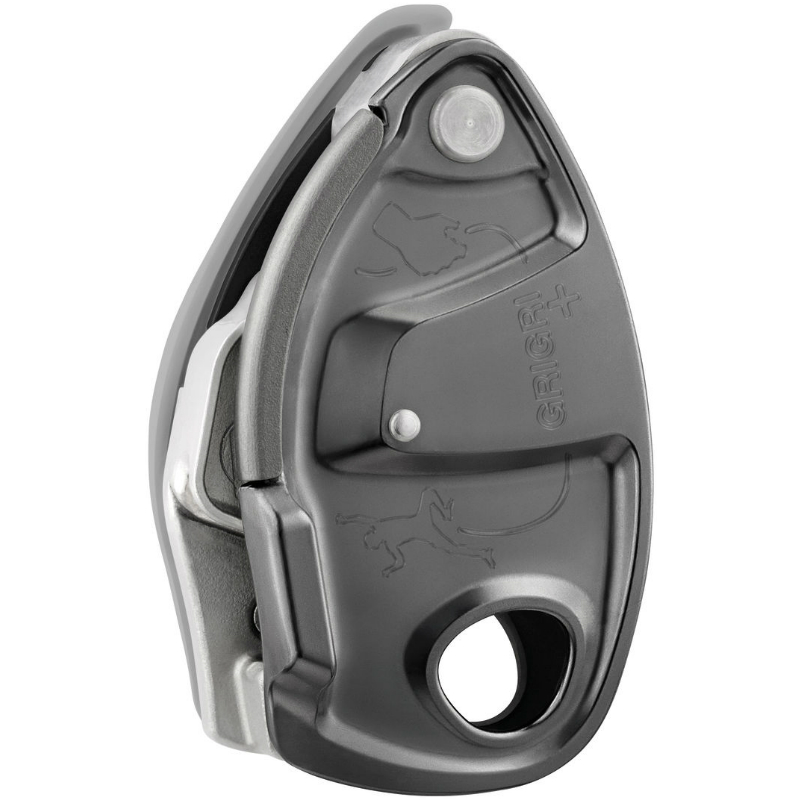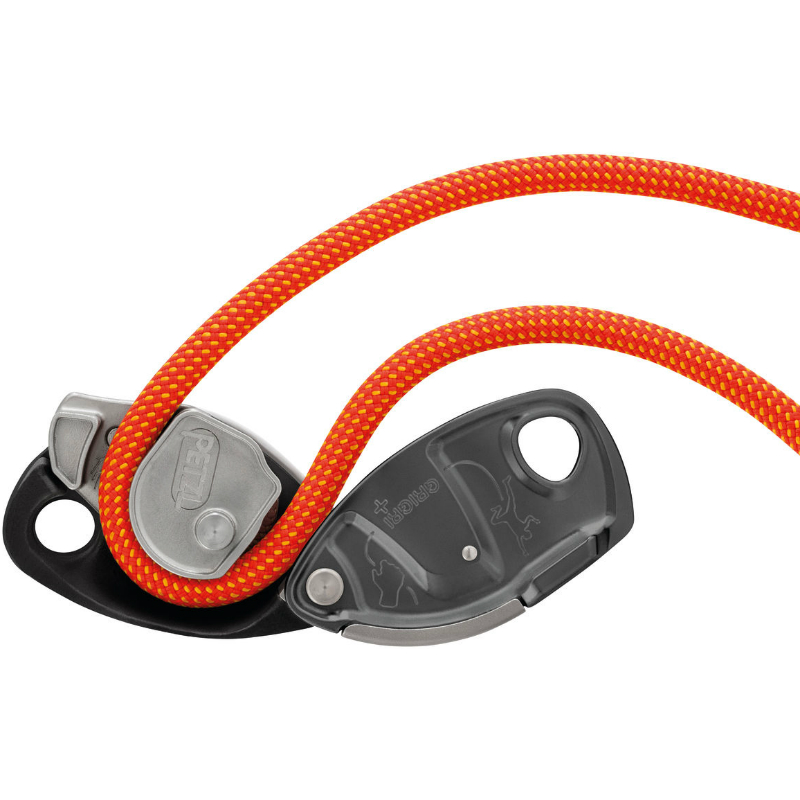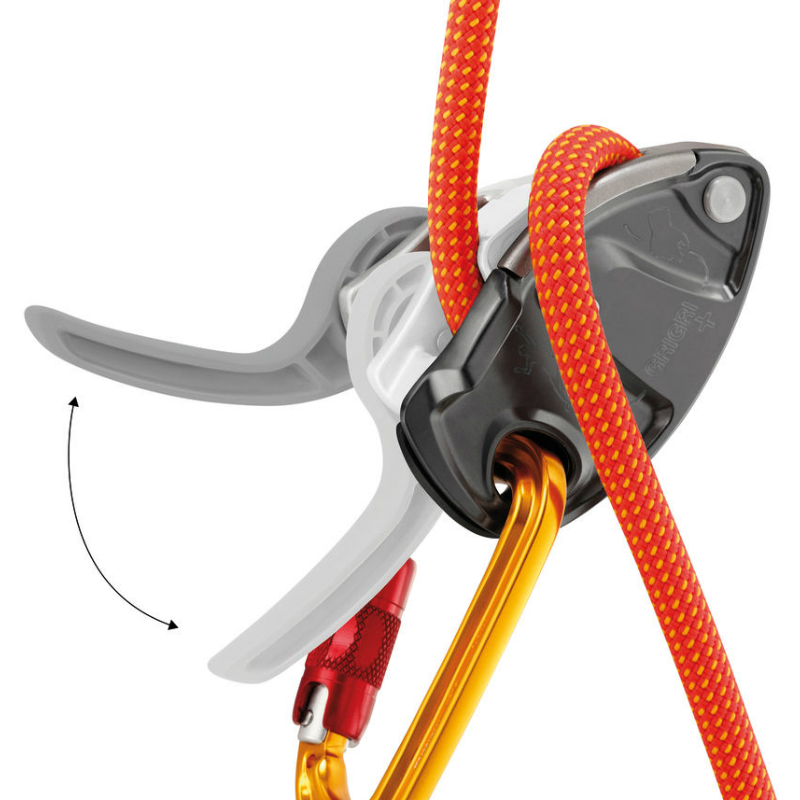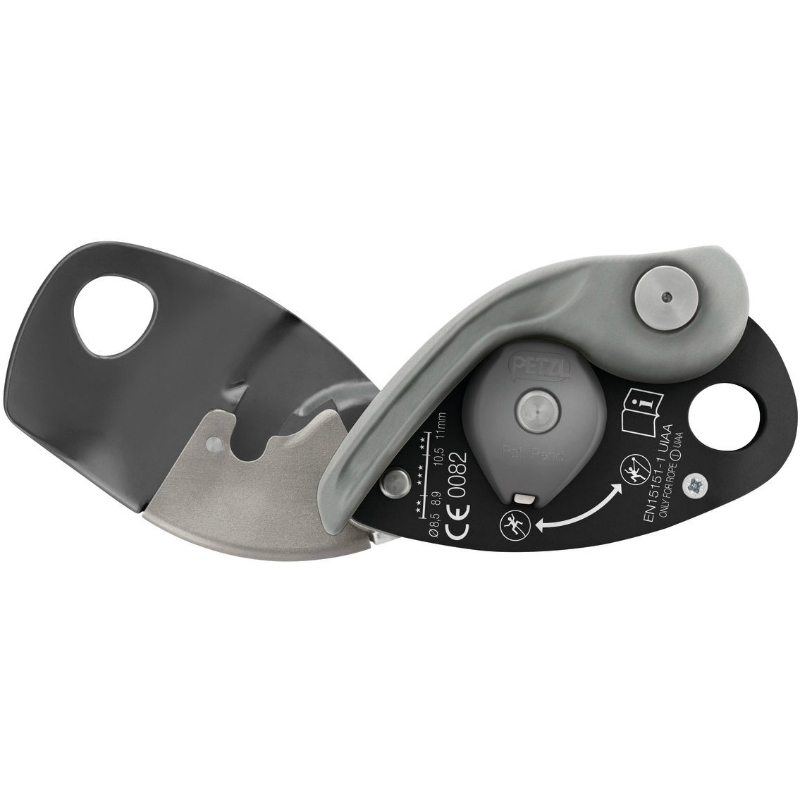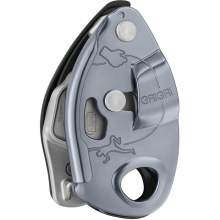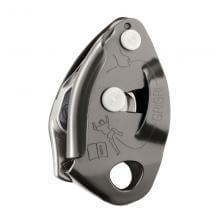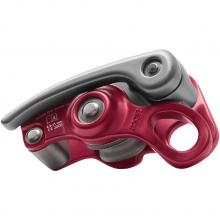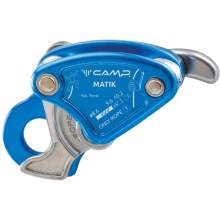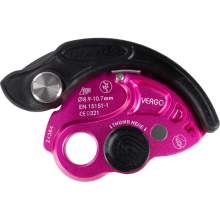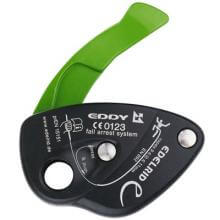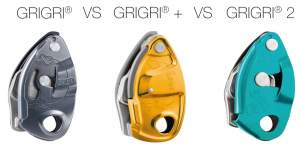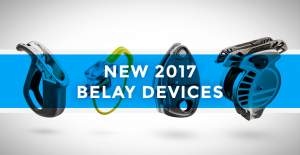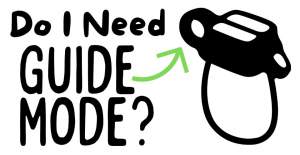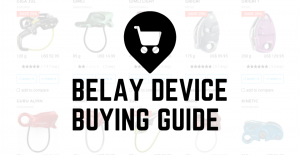GriGri +
Description
Belay device with assisted braking and anti-panic handle, for all single rope diameters
GRIGRI + is an assisted braking device designed for all climbers, for both indoor and outdoor climbing. It can be used with all single ropes and is suited for intensive use. The reduction handle offers exceptional descent control. Two usage modes to choose from, depending on need: top-rope belay or lead belay. The top-rope belay mode and the anti-panic handle make for a more comfortable belay, making the GRIGRI + particularly suitable for learning.
Description
- Belay device with assisted braking for indoors and outdoors, designed for all climbers:
- hand motions are the same as with classic belay systems: both hands on the rope. A fall is stopped by tightening the hand on the free end of the rope
- diagrams for rope installation engraved on belay device (interior and exterior)
- great durability, for intensive use, thanks to the stainless steel wear plate - Exceptional comfort during the descent, thanks to the very controlled progression of the rope feed
- Particularly suitable for learning:
- anti-panic handle: if the user pulls too hard on the handle, the anti-panic function brakes and stops the descent
- choice of belay mode, top-rope or lead, thanks to the selection knob: top-rope belay mode facilitates taking up slack and makes for a more comfortable belay
- option of locking the belay mode
Retail price
When you click a link below and then checkout online, no matter what you buy (climbing gear or not), we get a small commission that helps us keep this site up-to-date. Thanks!


Device Type  Device TypeTubeThe most commonly used belay type also called an “ATC” or “tuber.” Other than a distinction between other belay device types, “Tube” is a rarely used term, most climbers just assume you're talking about this style when they refer to your "belay device." 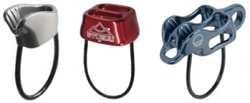
Figure 8Mostly used in rescue, canyoneering, tactical, work safety, or by old school climbers and rappellers. One reason they went out of popularity with recreational climbers is because they tend to create twists in the rope. 
Brake AssistThese devices assist in stopping the rope when a climber falls or hangs on the rope. 
Often referred to as “auto-blocking” but that’s not the official terminology because no belay device should be assumed to work automatically by itself, even if it feels like it does (or does most the time). PlateWhen simplicity is a must, or you started climbing before Tubers were the norm. Bonus: They tend to be very light weight. 
DescenderFor rappelling, not for belaying a lead climber or top-roping. 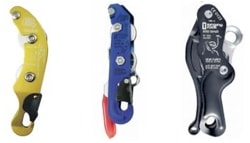 |
Brake Assist - Mechanical |
Weight (g)  Weight (g)In grams, the weight, as stated by the manufacturer/brand. |
200 g |
Belay Brake Assist  Belay Brake AssistThis is when the belay device significantly reduces the amount of holding power the belayer must exert to stop a fall and hold a climber. This is also called "assisted-braking" as the device must hold a significant amount of the climber’s weight; this term does not include friction-adding "teeth" found on some tube style belay devices. Confusingly referred to as “auto-blocking” or “auto-locking” these terms wrongly imply the device will always, automatically, stop a fall or hold a climber even if the belayer/rappeller is hands-free. These devices are not meant to be used without a hand on the braking side of the rope; the belayers/rapppeller brake hand should always be on the brake rope. Worth ConsideringMost of the mechanical brake assist devices only hold a single strand of rope and are not capable of double-strand rappelling (the most common method of rappel). |
Yes |
| Rope Options | 1 rope only |
Guide Mode  Guide ModeThis is when you belay directly off the anchor instead of your harness. Guide mode is helpful if you climb outdoors a lot because it reduces the holding power required from the belayer. When your partner falls or rests, the weight of the climber is held mostly by the anchor and the belay device. Tubers and PlatesWhen belaying in "guide mode," the tubers and plates turn auto-blocking. During a fall, the climbing rope pinches the slack rope, completely stopping the movement of either rope. A common guide mode setup shown below. 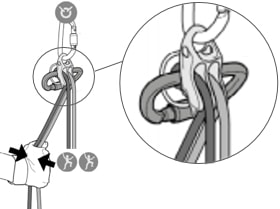
Mechanical Brake Assist DevicesThere is no difference in the functionality of the device. A brake-hand should always be on the rope to ensure the climber is caught in the case of a fall. A common guide mode setup shown below. 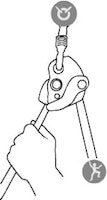
Where guide mode is used
Learn Morehttp://www.climbing.com/skill/essential-skills-auto-blocking-belay-devices/ |
1 follower only |
Teeth  TeethTeeth are only seen on tube devices. They add friction that helps grip the rope for more belaying control. This is helpful for belaying heavier climbers. Teeth are becoming standard on new tube devices. 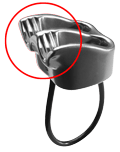
Worth ConsideringTeeth do wear out. You can limit wear by rappelling on the side without teeth (if you don’t need the extra friction). Once they’re worn, you’ll still have a usable belay device, just less friction. |
No |
Rope Range (mm)  Rope Range (mm)The range of rope diameters, in millimeters, that the manufacturer/brand specifies can safely be used. This is the best case scenario and does not necessarily take into consideration that certified ropes have a tolerance of +/- .3 mm. Recently, manufacturers have started to add an "optimized" rope range -- this is the range that will result in the nicest handling of the belay device. | 8.9 mm - 10.5 mm |
Certification  CertificationsThe main climbing gear certifications are CE and UIAA--and normally the UIAA creates the rules that the CE body also supports. When possible, we try to list all the certifications the product carries. To sell a climbing product in Europe, the device must be CE certified. There are no official requirements to sell climbing gear in the US. The UIAA certification is a voluntary process. Learn MoreRock and Ice Certifications Guide |
CE, EN, UIAA |
If you already own a relatively new Grigri, there’s no real rush to run out and buy a Petzl GriGri+. The Grigri is a fantastic and totally safe belay device. However, I would absolutely consider making the GriGri+ the next one you get because it’s even more fantastic and safer by a significant degree.
I really like that Petzl focused on making the GriGri+ safer and more user friendly for inexperienced climbers. This new model will undoubtedly save the climbing community countless injuries and possibly even a few lives. Of course there are always a few uncertainties when it comes to new features. The introduction of the different belay modes and the anti-panic function make the new GriGri safer and easier to use but are unproven over the long term. Only time and extended usage will determine how these new features will react to real world abuse. However, given Petzl’s impeccable record of thoroughly testing gear before releasing it to the public I think it unlikely that they’ll become a warranty issue.
Overall, after testing the Grigri + across a six month period on a variety of climbing terrain, we decidedly prefer the Grigri + over the previous models. For rope control alone, the Grigri + is worth a look, not to mention the introduction of other features including its steel plate to reduce wear and the model changes from lead climbing to top rope belaying. For us, the new safety features of the Grigri + are a good addition to the device but fell short of what was expected and were often more of an annoyance for experienced climbers. The real sticking point on the Grigri + is that is costs almost 30% more that the Grigri 2, making it a tough pill to swallow for the climber on a budget. Nonetheless, the Grigri + is now our go to belay device and we would highly recommend it for beginner to advanced climbers alike.
If you already own a relatively new Grigri2, there’s no real rush to run out and buy a GriGri+. The Grigri 2 is still a fantastic and totally safe belay device. However, I would absolutely consider making the GriGri+ the next one you get because it’s even more fantastic and safer by a significant degree.
Bottom line is that if you want some added safety features, climb on skinny ropes and want a device that will last longer, the GriGri + is worth a look. It’s also an excellent choice for guide services, schools and any other setting where it’s going to see intense use and the added safety features will be a benefit.
I’m a bit of a skeptic of the “latest and greatest” gadgets in climbing but the Petzl GriGri+ has surpassed the GriGri 2 in so many ways. There is definitely a small weight/bulk penalty but the added durability will be a boon when this device is well suited for so many types of climbing. I would consider it a great choice for gym and sport climbing, traditional climbing, guiding, big walls (especially in the desert where aluminum wears quickly), camp and school groups, and for my growing list of adventure photographer friends!
Petzl has been a step ahead of competitors in assisted braking belay devices since the first GriGri was released in 1991. With the GriGri+, they continue to deliver a belay device that is easy to use, functional, and safer than any other assisted braking belay device on the market. Between its anti-panic handle, two belay modes, and universally familiar design, the GriGri+ is an especially appealing option for those who are new to assisted braking belay devices or want to maximize safety without compromising on performance.
We think the Petzl Grigri + is a solid belay device. Most of our testers liked it for it’s added anti-panic function and top rope mode. The stainless steel wear plate is a bonus that adds value to the consumer. This belay device will be with you for a long time. When queried, most of our testers said that they would likely still use their Grigri 2 most of the time for lead climbing because of familiarity, size and weight. Consumers will have to decide how much they want these added features because of the 50% price premium, $149 vs. $99 for the Grigri 2. If you spend most of your time in they gym top roping, or in the desert with sand covered ropes that wear out metal gear quickly then the Grigri + might just be the best belay device for you.
"You figured out that if you go past the panic function, then you're just lowering," Roetzel continues. "When you feel the click you've [partially] activated the anti-panic feature. You over-rode it. Like when rappelling, if you don't have a lot of weight on the rope, you'll keep activating that panic feature so you have to override it." Because of this addition, there's a sweet lowering spot that descends the climber at a controlled rate.
Compared to the GriGri 2, the GriGri+ is overall a better suited device for all users across the board. As an expert who climbs with beginners frequently it has quickly become my assisted braking device of choice after only a week and a half of use. It’s weight of 200g compared to the 170g of the GriGri 2 is insignificant for the improvements in security.
- 1 of 2
- next ›
How to use the GRIGRI +, various instruction of GRIGRI + including inspection and techniques.
A checklist to monitor your belay device, it helps you to know when to retire your belay device.
Describes with words and helpful photos, how to protect your belay device and other metal equipment.

